Interface IP Cores
Interface IP cores are used to achieve communication between chips and external devices or other chips. Common interface standards include USB, PCIe, SATA, I2C, SPI, Ethernet, etc.
Explore our vast directory of Interface IP cores below.
All offers in
Interface IP Cores
Filter
Compare
3,381
Interface IP Cores
from
174
vendors
(1
-
10)
-
UDP Offload Engine for IPv4
- The UDP/IP core implements the UDP/IPv4 standard RFC 768/791, including checksum, segmentation and reassembly hardware offload.
- The UDP/IP core is tested for operation with popular FPGA vendors’ GbE Ethernet MACs.
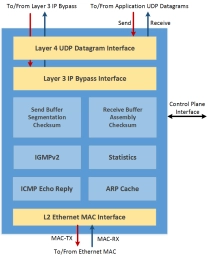
-
Ethernet PHY IP
- Compliant to 802.3 Ethernet specification - 200GBASE-KR4, 200GBASE-CR4, 100GBASE-KR4, 100GBASE-CR4, 100GBASE-KR2, 100GBASE-CR2, 50GBASE-KR, 50GBASE-CR, 40GBASE-KR4, 40GBASE-CR4, 25GBASE-KR, 25GBASE-CR, 10GBASE-KR, 10GBASE-CR
- Data rate supported - Ethernet: NRZ 3.125 - 26.5625Gb/s, PAM4 53.125Gb/s
- DSP-based architecture using high-performance ADC/DAC for RX/TX

-
1G BASE-T Ethernet Verification IP
- The 1G BASE-T Ethernet Verification IP provides deliverables an effective & efficient way to verify the components interfacing with the Ethernet interface of an IP or SoC.
- The 1G Ethernet VIP is fully compliant with the IEEE standard 802.3 specification.
- This VIP is lightweight with easy plug -and- play interface so that there is no hit on the design cycle time.
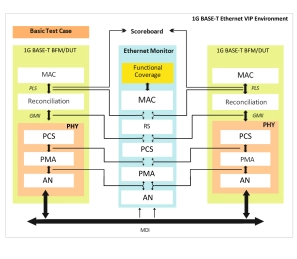
-
DSC Encoder
- Compliant with VESA DSC 1.2b, backward compatible with DSC 1.1
- Supports all mandatory and optional coding schemes:
- Modified Median-Adaptive Prediction (MMAP)
- Midpoint Prediction (MPP)
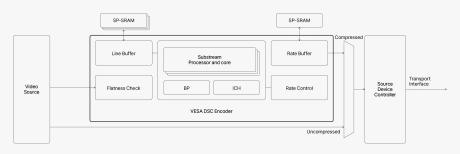
-
DSC Decoder
- Compliant with VESA DSC 1.2b, backward compatible with DSC 1.1
- Supports all mandatory and optional coding schemes:
- Modified Median-Adaptive Prediction (MMAP)
- Midpoint Prediction (MPP)

-
DP and eDP TX/RX PHY IP
- eDP v1.5 compliant
- Supports for 1.62Gbps to Max 8.1Gbps data rate
- PSR, PSR2 supported for low power consumption ( FW_SLEEP, FW_STANDBY supported )
- Supports for eDP v1.5 feature such as AUX-less Link Training
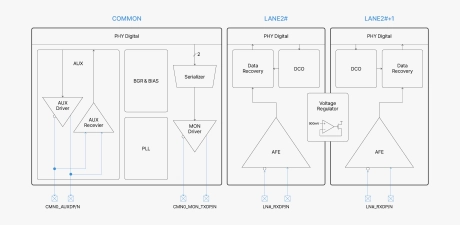
-
MIPI C/D-PHY Combo IP
- Compliant to MIPI D-PHY v3.0, C-PHY v2.1 specification
- Area efficient macro optimized for placement for dense SoC designs
- Support Uni-(TX or RX) and Bi-directional(TX and RX) mode
- Support emphasis architecture over lossy channel for TX
- Support equalize architecture over lossy channel for RX
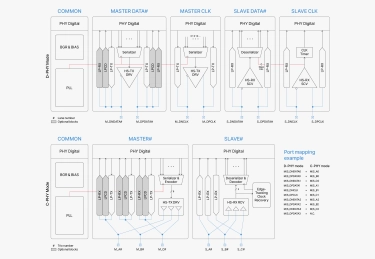
-
DSI-2 TX/RX Controller
- DSI-2 TX/RX IP supports both transmit and receive functions in line with the DSI-2 v1.1 and D-PHY v2.0 standards.
- Designed for modern SoCs integrating display functionality, it supports high-speed and low-power modes, lane configurability, and robust link features—making it ideal for advanced embedded display applications.
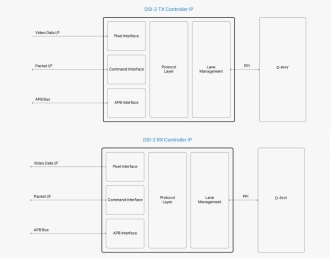
-
MIPI CSI-2 RX Controller
- Lane merging, virtual channel detection, and programmable data extraction
- Error detection and correction, including packet-level and protocol decoding errors
- Supports all pixel formats defined in the CSI-2 standard

-
20G MSS (Multi-standard SerDes) PHY
- Developing under SF4X CMOS technology (2025.06.30 MTO)
- Compliant to multiple standards, max datarate 20Gb/s
- Channel Configuration for Data Lanes: 1, 2 or 4 Data Lanes
- Reliable Ring OSC PLL based architecture for Low power consumption
